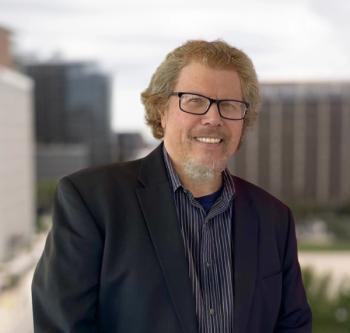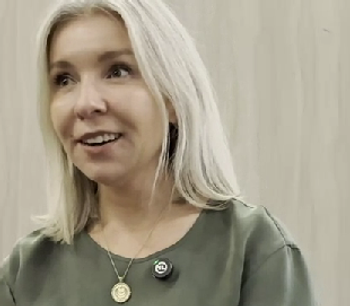
- Vol 32 No 12
- Volume 32
- Issue 12
Working Within a Campus Health Service: A Challenge With Many Rewards
Psychiatrists can provide significant support and insight to patients who are now coming to campus with a wide array of mental health challenges.
There are 4706 degree-granting institutions of higher education (IHE) in the US with 21 million students.1 Of these IHEs, 63% are traditional 4-year schools that typically provide mental health care for enrolled students. A much lower percentage of 2-year schools provide these services. These institutions are seen as a pathway to a better life by US students and close to 1 million international students.2 An increasingly diverse cohort of students is coming to campus with a wide array of mental health challenges and concerns. The nature of the setting and the types of students who are coming to campus are essential to understanding the context for this article.
Decades ago, students in these settings would seek care for developmental issues, relationships, and life direction. Medications were few and far between (eg, TCAs, diazepam, chlordiazepoxide, chlorpromazine), and many were problematic by today’s standards. Today more serious issues such as suicide, self-injury, eating disorders, substance abuse, and bipolar disorders are common concerns. The medications have become better, with greater efficacy and fewer adverse effects. College mental health today looks more like community mental health as students are matriculating with more significant mental health histories than in the past.
[[{"type":"media","view_mode":"media_crop","fid":"44423","attributes":{"alt":"© wavebreakmedia/shutterstock.com","class":"media-image media-image-right","id":"media_crop_614154258740","media_crop_h":"206","media_crop_image_style":"-1","media_crop_instance":"4964","media_crop_rotate":"0","media_crop_scale_h":"158","media_crop_scale_w":"200","media_crop_w":"260","media_crop_x":"7","media_crop_y":"3","style":"float: right;","title":"© wavebreakmedia/shutterstock.com","typeof":"foaf:Image"}}]]As evidence of the level of distress seen nowadays among university students, the American College Health Association’s survey based on 79,266 students at 140 IHEs in 2014 revealed that at some point in the previous 12 months, 33% of students reported feeling so depressed that it was difficult to function, 46% of students felt hopeless, 54% experienced overwhelming anxiety, 8% seriously considered suicide, and 1% attempted suicide.3 It is also noteworthy that nationwide the percentage of adults who have serious thoughts about suicide is highest among persons aged 18 to 25 (7.4%).4 The number of completed suicides among college students is half that of their non-student peers, largely thought to be because of restrictions on firearms on college campuses.5
There are several explanations for the growth in serious difficulties. The first is that medications are frequently started in middle school and high school but often without the benefit of counseling. Or only limited counseling is provided in school, which-with parental support-helps students graduate from high school. In college, symptoms increase when students encounter greater academic and psychosocial challenges.
Second, the Americans With Disabilities Act requires schools to provide reasonable accommodations for students with disabilities, and mental health issues fall under that category. Historically, students often hid their disability, but now they declare it and seek accommodations.
Finally, while infrequent on any given campus, recent high-profile acts of violence as well as the threat assessment movement have shaped the national dialogue and given college mental health a higher profile. Consequently, IHEs have developed an increased sense of responsibility for providing comprehensive mental health care to students, and many campuses have experienced an increase in staffing and programs for both outreach and treatment.
Mental health care on campus
Every day, counseling center directors are typically faced with balancing increased clinical demands, providing training to new professionals, overseeing outreach to the community, ensuring that electronic patient records systems are working appropriately, maintaining quality control, and keeping up staff morale. At the same time, they must wrestle with stable and sustainable models for funding these efforts.
Providing mental health care for students at today’s IHEs involves responding to expanding levels of complexity. It requires strong clinical skills and a willingness to participate in a highly interactive and interpersonally connected community. Psychiatrists who practice in these settings are usually part of agencies with a focus on the entire campus community, beyond the individual patients. This involves consultation with colleagues in the clinics where they work, such as therapists and primary care physicians, and in the academic world, such as deans, faculty members, and student affairs personnel. Many of the patients have recently become legal adults; however, their parents expect ongoing involvement in their care, and the students experience ambivalence about such involvement.
A basic issue regarding psychiatry on campus is whether it is actually available. The most recent Association for University and College Counseling Center Directors Survey indicates that one-third of IHEs have no psychiatric services; on another third, services are available only at the counseling service; and on 13% of campuses, psychiatry is available only in the health service.6 On campuses where no psychiatric services are available, psychotropic medications are prescribed by psychiatrists in the local community or by primary care physicians in the student health center with limited collaboration with therapists, or medication is not available at all.
Working with campus health and counseling services
Psychiatrists who work within a health service can facilitate access to essential medical workups to clarify complicated diagnoses, which can sometimes be attributed to physical causes. Once a diagnosis has been established, they can prescribe the most appropriate medication. On the other hand, reporting within a counseling service can make collaborating and sharing information with counseling center psychotherapists much easier.
Although the role of psychiatrists is often medication management because of budgetary reasons, many psychiatrists also provide significant support and insight to student patients. With somewhat longer follow-up appointments and shorter waiting periods between appointments than typically found in the community, a deeper treatment relationship can develop than one might have in a more typical “medication management” role.
Psychiatric residents sometimes provide care in college mental health centers. This involvement is less common and typically occurs when a university’s training program is affiliated with its student health center or when there is a relationship between the counseling center and a residency program. These may be short elective rotations, although they work better when a resident can be present for a full semester or academic year. Post-residency fellowships are also a very good fit for longer-term training in college mental health.
Within the varied administrative structures, psychiatrists who work in IHEs are confronted with a level of psychopathology that defies common stereotypes. The Center for Collegiate Mental Health, a data bank of nearly 300 college counseling services that provide care to more than 100,000 students, has reported that nearly one-third of students presenting for care have already had at least one trial of psychotropic medication; approximately 10% have had a psychiatric hospitalization; 30% reported seriously considering suicide; and 9% had attempted suicide.7
These data provide a thumbnail sketch of the type of cases a psychiatrist in higher education may be asked to treat. The college years encompass the age of first onset for multiple psychiatric illnesses; therefore, psychiatrists are often on the front lines in responding to students who experience their initial episode of a bipolar disorder, their first psychotic break, or their first major depressive episode. Psychiatrists in IHEs are involved in risk assessments and transferring students to local hospitals as needed. They also are point people for communicating with the hospital during treatment and follow-up care at discharge.
Other mental health issues
Alcohol abuse continues to be a prevalent challenge, is sometimes combined with abuse of other drugs, and is frequently comorbid with other mental health disorders. The diversion of prescription medications is another serious concern. This is common with medications prescribed to treat ADHD. Students frequently seek prescriptions for stimulants to help them focus and give them an edge in highly competitive academic environments, opening up the pathways for considerable abuse.
Determining the need for medications is time-consuming and complex. Different settings have different solutions: while some IHEs do not allow stimulants to be prescribed, some have restrictive policies, and others have no clear rules. The hardy nature of this age group often means psychiatrists can see very high levels of substance use that do not immediately affect students’ academic functioning, although there may be other serious consequences such as physical injury, blackouts, trouble with the law, and sex without consent.3
Eating disorders are another common concern that can go undiagnosed in this setting. Students present with a wide range of these symptoms from sub-threshold levels to life-threatening presentations. Many students need a higher level of care but are so focused on their academic work that they are unwilling to seek that care voluntarily. Meanwhile, psychiatrists and other mental health care clinicians are expected to develop plans to respond effectively.
Sexual assault continues to garner considerable national attention. Practicing in this setting requires an understanding of the US Department of Education Office of Civil Rights Title IX regulations about the rules and responsibilities of faculty and staff at an IHE. Having a keen multicultural understanding is also essential to this work. Issues related to racism and bias can negatively affect students’ willingness to seek care, and data show that microaggressions and blatant incidents of bias have a negative impact on student mental health.8,9 Given this complexity, it is important to understand what the day-to-day work of psychiatrists in this setting looks like.
CASE VIGNETTE
W is an 18-year-old Asian American freshman majoring in engineering. She grew up in Queens, NY, with her biological parents and younger brother. She is a first-generation college student. Upon moving to campus, she became self-conscious and felt that others were criticizing her appearance and social skills. She focused solely on her academic work and isolated herself. Social contact was limited to the dining hall and library. She made no close friends over the semester and finished with a grade point average disappointing to both her and her parents.
W dreaded returning to school after winter break, but her parents pushed her to return. At school, she began going out on weekends with students from her residence hall, using alcohol to feel accepted and less fearful. Over the following month she drank 3 or 4 nights a week, consuming 8 to 10 drinks a night with occasional blackouts. One evening her residence advisor (RA) found her in the hallway, intoxicated and tearful. The RA attempted to refer her to the counseling service but she refused, fearing her parents’ disappointment. She was willing to go to a “Let’s Talk” counseling center outreach site near her residence hall to informally consult with a counselor from the university’s counseling service.6 At the Let’s Talk visit the next day, she revealed sleeping up to 12 hours, eating one meal a day, a loss of interest in schoolwork, difficulty concentrating, trouble motivating herself, and low energy. In addition, she hesitantly shared that she often felt that others were watching her, whispering her name and laughing. She said that for the first time in her life she wondered if she would be better off dead.
The Let’s Talk counselor walked W to the counseling service and scheduled her for a same-day psychiatric intake appointment. The psychiatrist made a diagnosis of major depression, single episode, severe with psychosis, alcohol use disorder, and a rule out social phobia, and recommended that W begin a trial of citalopram and aripiprazole. W refused medication saying that her parents were against it. She agreed to abstain from alcohol and to meet with her academic advisor to discuss a reduction in her course load.
She followed up with a counselor 2 days later and with the psychiatrist later the same week. In the subsequent therapy session she reported that she felt unsafe in her room, hearing people outside of her window criticizing her. When asked about suicidal thoughts, she acknowledged that she was contemplating walking into a field with a bottle of vodka and drinking until she passed out, hoping she would freeze to death. Her treatment team engaged campus police and the ambulance service and had her transferred to a local hospital. She was successfully treated and received support from the school’s mental health staff. With her permission, her family was contacted and became involved in decisions about her treatment. W took a voluntary medical leave of absence but continued on her medication. She returned to campus 8 months later and reinitiated supportive treatment with the therapist and psychiatrist.
The care provided through counseling and medication management in W’s case worked. National data support the conclusion that mental health care provided on university campuses produces “positive change observed . . . equivalent to that documented in Randomized Controlled Trials for Depression, Generalized Anxiety, Social Anxiety, Eating Concerns, and Hostility.”4
Practicing at an IHE often allows for access to medical consultation, specialized psychotherapy, laboratory services, community outreach, and other services difficult to find in many community settings. The treatment of the concerns outlined in the case vignette and the potential for rapid evaluation and treatment increase the likelihood that students will remain in school and achieve academic success. Working with a population that is motivated, intelligent, and insightful makes the university setting a particularly rewarding environment.
Disclosures:
Dr Meilman is Director of Counseling and Psychiatric Services and Professor in the department of psychiatry at Georgetown University in Washington, DC; Dr Eells is Director of Counseling and Psychological Services and Associate Director of Gannett Health Services at Cornell University in Ithaca, NY; Dr Mendola is Assistant Director for Psychiatry, Counseling and Psychological Services at Cornell University; Dr Lillrank is Assistant Director for Psychiatry, Counseling and Psychiatric Services at Georgetown University. The authors report no conflicts of interest concerning the subject matter of this article.
References:
1. National Center for Education Statistics. Fast Facts. 2015.
2. Institute of International Education. Open Doors 2014 Report. Open doors 2014: International students in the United States and study abroad by American students are at all-time high.
3. American College Health Association National College Health Assessment II. Spring 2014 Reference Group Executive Summary.
4. Substance Abuse and Mental Health Services Administration. Results From the 2013 National Survey on Drug Use and Health: Mental Health Findings.
. Accessed October 24, 2015.
5. Drum DJ, Brownson C, Denmark AB, Smith SE. New data on the nature of suicidal crises in college students: shifting the paradigm. Profess Psychol. 2009;40:213-222.
6. Association for University and College Counseling Center Directors Annual Survey. Reporting period: September 1, 2013 through August 31, 2014.
7. Center for Collegiate Mental Health. 2014 Annual Report.
8. Boone M, Eells GT. Reaching students who won’t walk in: innovative outreach programs offer options. 2008.
9. New J. A ‘chilly climate’ on campus. January 8, 2015.
Articles in this issue
about 10 years ago
Introduction: A Demographic With a Challenging Set of Problemsabout 10 years ago
Challenges of Transitioning From Pediatric to Adult-Oriented Careabout 10 years ago
Still Practicingabout 10 years ago
Cranial Electrotherapy Stimulation for Bipolar Depression: New Dataabout 10 years ago
Physician Health and Professional Secrecyabout 10 years ago
Psychiatric Care of Peripartum Womenabout 10 years ago
No News Is Not Good Newsabout 10 years ago
The Evil HoursNewsletter
Receive trusted psychiatric news, expert analysis, and clinical insights — subscribe today to support your practice and your patients.

















